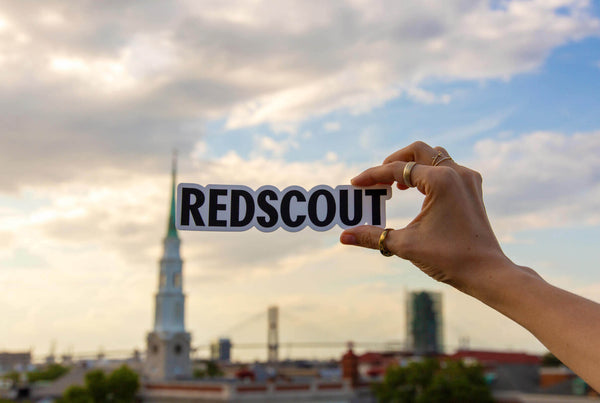Mission. Vision. Brand Belief. These are a few of the familiar frameworks we see companies use to organize and rally their employees around a common purpose. At Redscout, we use the North Star as a unifying principle that guides your team, drives action, and builds confidence for a brand to show up at its best. Via both function and form, it’s a decision-making making tool and an aspirational ideal. Let’s dive into how North Stars work and a few examples of how they show up in the real world.
What is a North Star?
The North Star is an articulation of our unique and ownable promise to the consumer. An example you might already be familiar with is Disney’s famous North Star, “The Most Magical Place on Earth.” Another one is Netflix’s “Entertain the World.” For our clients at Redscout, the North Star is an important tool that helps employees at all levels of a company understand the mission at hand and how it should show up in everyone’s work. The North Star is sometimes public facing but is most often used as key internal guidance, a shining light that guides everything we do.
The goal of a North Star is to give a brand the confidence needed to chart a new strategic direction, and it’s one tool we use to help guide decision-making in the short and long term.
Where to Start a North Star Project
North Star work always starts in two places: corporate strategy and internal culture. The work of defining the North Star is about connecting the two in a unique and ownable way.
Often, marketing leaders will come to Redscout with an existing corporate strategy that needs to be translated into an easily understood message that resonates with employees across geographies, cultures and pay bands. Other times, we will start from scratch, talking with dozens of employees across all levels of a company, unearthing the strengths, weaknesses and quirks that make a brand tick. Regardless, all North Stars start eventually get to the same place—it’s an exercise in figuring out how your brand will show up on its best day.
What North Stars Look Like
Because the North Star must be a universal phrase everybody understands, it takes different forms. The way a North Star takes shape depends on your business challenge. If you’re looking to unify a team and introduce a new sense of identity amongst employees, a North Star might manifest as a persona. Alternatively, if driving action around a common theme is the key goal, the end result of your North Star project might be a rallying cry.
- Persona: Best Buy has over 100,000 employees, so their North Star took the shape of a role everyone could play: “The Inspiring Friend.”
- Rallying cry: Scholastic is a mission driven organization with multiple audiences, and so the North Star took the form of a shared rallying cry: “We make reading unmissable.”
North Stars in the Real World
Here are a few examples of our favorite North Star projects. You can see more examples of North Star projects here.
Best Buy: The Inspiring Friend
Seven years into Hubert Joly’s tenure as CEO, Best Buy stood as a rare big box store survivor in a retail landscape dominated by Amazon. As the executive team defined the next chapter of Best Buy’s growth, they sought help defining a credible path forward that would assert that the retailer’s core strengths could in fact be a competitive advantage in a changing marketplace.
In the face of these challenges, we needed to define and assert the role people would play as our space was disrupted by e-commerce. We landed on the North Star of The Inspiring Friend, recommending that Best Buy take the best qualities of its people––warmth, guidance, and expertise––and apply them to every customer interaction.
This culminated in more flexible return policies, enhanced customer support and marketing that heroed the passions that tech enables. This also unlocked new business opportunities for Best Buy, paving the way for an expansion into healthcare with the launch of Best Buy Health.
Scholastic: Make Reading Unmissable
Scholastic had established itself as a leading figure in children’s publishing, education, and media, known for its lasting dedication to promoting literacy and instilling a passion for reading in young minds. The company was and is synonymous with top-quality children’s books, effective literacy programs, and comprehensive educational materials, for teachers, parents, and children alike. But they faced a key question at time of transition: With new leadership, and pandemic-fueled changes to the reading journey at school and home, how should Scholastic rise to meet the moment?
Scholastic’s siloed structure led to duplicated efforts, reduced efficiency, and limited the org’s ability to adapt in the fast-evolving publishing and educational sectors. This dynamic hindered Scholastic’s ability to innovate at a time when their contribution was needed most.
To unify and inspire the organization on a singular path, we crafted a new rallying cry—to “make reading unmissable.” The statement bridges Scholastic’s legacy as the leaders in children’s storytelling while giving them clarity on where and how they could credibly evolve their offering to fuel a new era of collective success.
Peloton: People Want to Work Out
In 2012, Peloton’s founders introduced the world of boutique fitness to consumers’ homes with a spin-bike worthy of the living room, a custom streaming platform, and best-in-class instructors. With a mandate for sustainable growth, the company faced two fundamental questions: 1) what business is Peloton really in, and 2) how can a strong brand platform help us grow a loyal audience?
We realized the biggest barrier to people buying a Peloton was not uncertainty about whether the bike was good. It was uncertainty about whether they would be motivated enough to actually use it. The unlock was that Peloton’s design, technology and entertainment created something “captivating” that taps into people’s latent inner drive.
We crafted a brand positioning and strategy that crystalized Peloton’s ability to tap into the idea that, inherently, “People Want to Work Out..” Then, we codified actionable innovation and marketing principles focused on awareness, acquisition, and retention to inform the marketing team’s growth efforts, from merch to events, campaigns, and retail comms.
How to Know if You Need a North Star
While every North Star is different, they all help unify employees and provide a roadmap toward meeting current business objectives. Here’s how to tell whether you need a North Star:
- Differentiated: Do you understand your unique points of differentiation and why they matter to the consumer?
- Ubiquitous: Does everyone across the organization know it?
- Actionable: Can they make decisions against it?
If you’re interested in learning more about North Stars and how one might help your company, reach out to us at growth@redscout.com




